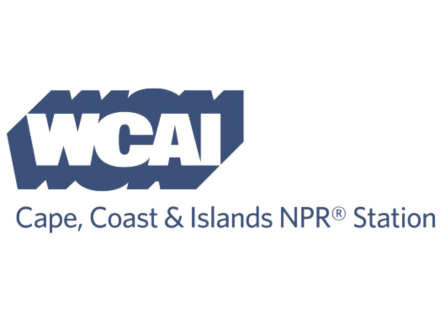New Bedford is a shining sea of possibilities
Read online: New Bedford is a shining sea of possibilities
The Boston Globe
Janelle Nanos and Tim Logan (November 10, 2021)
New Bedford is a shining sea of possibilities: The city’s future hinges on the coexistence of its historic fishing industry and the new technologies of wind energy.

The On the Street series looks at the past, present, and future of neighborhoods in Greater Boston.
NEW BEDFORD — Stand here on Leonard’s Wharf, near where the Acushnet River empties into Buzzards Bay, and you’re surrounded by boats with colorful hulls and elaborate rigs. They help power the nation’s most lucrative fishing port, hauling hundreds of millions of dollars worth of scallops, fish, and lobsters from the Atlantic Ocean to be sold worldwide.
Next door, behind a rusty chain-link fence, sits a huge old power plant, long unused. The 29-acre site is one of two on New Bedford’s waterfront that is poised to host the assembly of massive wind turbines that would be shipped out and mounted in the Atlantic Ocean, promising much-needed clean energy for the Northeast.
Whether these two industries — one ages old, the other being birthed on the fly — can coexist in New Bedford harbor and out in the ocean will say a lot about the future of one of the most distinctive places in Eastern Massachusetts, a city that has for most of its 234 years drawn a living from the sea.
Of course, what that success has looked like has changed several times.
In the early to mid-1800s, New Bedford was the capital of the global whale oil industry — “the city that lit the world.” By the 1840s, it was, by some measures, the wealthiest city per capita on the planet. People were attracted to an industry where the only job qualification was a willingness to stand eye-to-eye with a whale from the prow of a rowboat. New Bedford soon established itself as a place that welcomed all comers.
Then came textile mills, and with them a wave of European immigrants that ballooned the population to more than 120,000 by the 1920s. In recent decades, commercial fishing has driven the city’s economy. Scallop fishing, in particular, has been crucial, having recovered from a sharp decline in the early 1990s to become a thriving and stable business.
Today, scallop boats based as far south as the Carolinas come here to sell their catch. The city lands more than $400 million in seafood each year — eight times that of its perhaps-better-known northern cousin in Gloucester, and more than all other East Coast fishing ports combined. Eighty percent of that value comes from scallops.
“When you get outside of Massachusetts, people are startled to learn that New Bedford is the leading fishing port in the US,” said Bob Unger, former editor and associate publisher of the SouthCoast Media Group, who noted that Hollywood movies and reality TV shows have tended to feature other ports. “‘The Perfect Storm’ convinced them it was Gloucester,” he said.
The New Bedford waterfront is lined with more than just boats. An operation of this scope requires fish processors and ice houses to serve the fishing fleet, but also an array of engine and repair shops, fuel providers, and other businesses that can service anyone who’s heading out to sea, including the ships that will spend years building offshore wind turbines.
Vineyard Wind plans to start construction next year on 62 turbines — enough to power 400,000 homes — south of Martha’s Vineyard, just 35 miles by sea from New Bedford. Officials hope the $2.3 billion project will be the first of several offshore wind farms to be assembled and serviced from here, and they aim to establish the city as a center of a new industry.

“I think this can have the same impact on New Bedford as other major chapters of our history,” said John Bullard, a former mayor of the city and an Obama-era federal fishing regulator. He now heads the newly formed New Bedford Ocean Cluster, which aims to develop the city’s maritime industries. “We spread the light, and we’re going to do it again,” Bullard said. “That’s the character of this city.”
But offshore, in waters ideal for both fish populations and wind energy, things get a lot more complicated. Figuring out where to site wind turbines so they don’t disrupt fishing grounds is a complex and high-stakes exercise, one that’s never really been tried at this scale before. The structures can be as tall as Boston’s John Hancock Tower and have blades the length of a football field.
Fishermen worry about the impact of wind installations on their dredges and nets — which can in some cases trail for miles behind a boat — and radar, and about whether the wind arrays will shift water temperatures, or change how fish move through the sea. Planners say they’re listening to the concerns, and stress that turbines are typically spread at least a mile apart to aid navigation through the wind fields. But some fishermen worry even the best plans will fall short.
One of them is Eric Hansen, a longtime scallop boat captain and owner whose family has fished the waters off New Bedford for more than 100 years. He serves on the board of the Fisheries Survival Fund, an industry group that helped rebuild the scallop harvest over the last two decades, and the Responsible Offshore Development Alliance, which advocates to protect historic fishing grounds. Hansen says he’s not opposed to offshore wind, but he’s hard-pressed to upend a longtime lucrative industry for something so unproven.
“It may all work on a perfect day with perfect conditions,” he said. “But it’s hard to explain to someone who hasn’t witnessed the power of the ocean how powerful it actually is. And when you have mountains of water coming at you that will toss you around drastically, well, it’s hard to picture a wind turbine in that environment.”

Ideally, turbines could be built out slowly, with years to experiment and study how they affect fisheries, said Mike Pol, research director at the Responsible Offshore Science Alliance, a nonprofit jointly overseen by the fishing and offshore wind industries that’s aiming to guide development. But the need for clean energy is so urgent that planners need to move quickly and get it right the first time.
Complicating matters, New Bedford is just one of numerous port cities angling to house the North Atlantic’s nascent offshore wind industry — including those in states such as New York, where fishing holds far less political sway than it does in Massachusetts and where elected officials are eager to embrace offshore wind.
That has New Bedford Mayor Jon Mitchell lobbying both to protect his city’s signature industry and carve out its place in a new one.
On one hand, he’s lobbying Beacon Hill to change the way Massachusetts awards offshore wind contracts, to help draw more lucrative bids that would boost the industry’s investment in New Bedford. On the other, he’s urging Washington to protect lucrative fishing grounds off the coast of New Jersey, where shifts of even a few miles in the location of wind farms could make a huge difference to New Bedford scallop boats.
Navigating these uncharted political waters isn’t easy, he admits. But he believes it’s essential to the city’s future.
“We’ve been committed to the proposition that these two industries can coexist successfully here in New Bedford and out at sea,” he said. “We see ourselves as a mediator between the two.”

For Mitchell, the arrival of offshore wind represents something bigger — a chance to build on the success New Bedford has achieved over the last decade. In his 10 years in office, the former federal prosecutor has put quality-of-life issues front and center, bringing down New Bedford’s crime rate by 39 percent in the past four years, and boosting its high school graduation rate 30 points, to 88 percent.
Offshore wind means jobs, he said, the kind that can give students a reason to stay and can help to sustain New Bedford’s immigrant and working-class residents.
“It’s important to pull people in” to the city’s emerging economy, he said. To accomplish that, officials have partnered with the region’s vocational high school on training programs and helped Bristol Community College launch a National Offshore Wind Institute.
Still, some say it’s difficult to connect residents — particularly in immigrant neighborhoods — with the opportunities in new industries such as offshore wind.
Gail Fortes, who heads the YWCA of Southeastern Massachusetts, works with people patching together two or three part-time jobs to make ends meet. Many are single mothers. To them, she said, the sort of opportunities being touted in wind or fishing can feel out of reach.

“I don’t think people know or understand about wind, or that the fishing industry isn’t just about these boats that go out for days at a time,” she said. “You have to get on the Portuguese radio stations, and Spanish-speaking, and reach into the Cape Verdean community.”
For Bullard, the economy of New Bedford has always been strongest when the city has opened its arms to newcomers. Charting a new course is what New Bedford has always done best, he said.
“The story of this city comes down to one word,” Bullard said. “We’re a seaport. We send our people to sea. We always have, and I hope we always will.”





